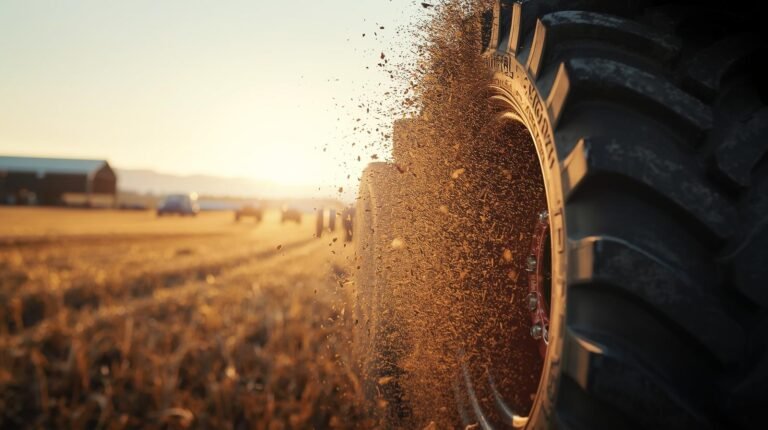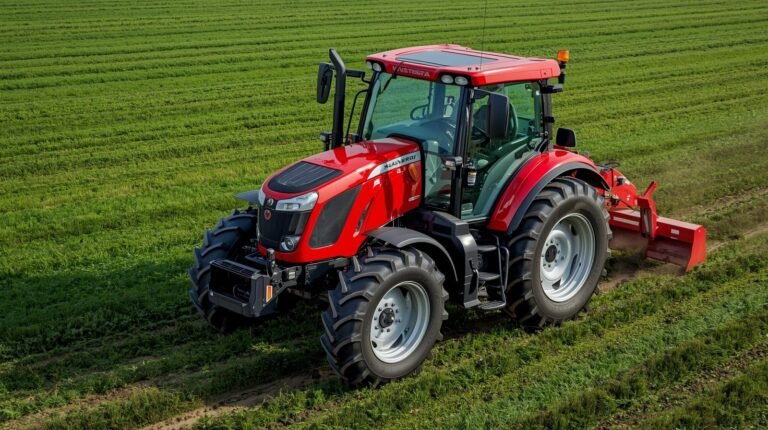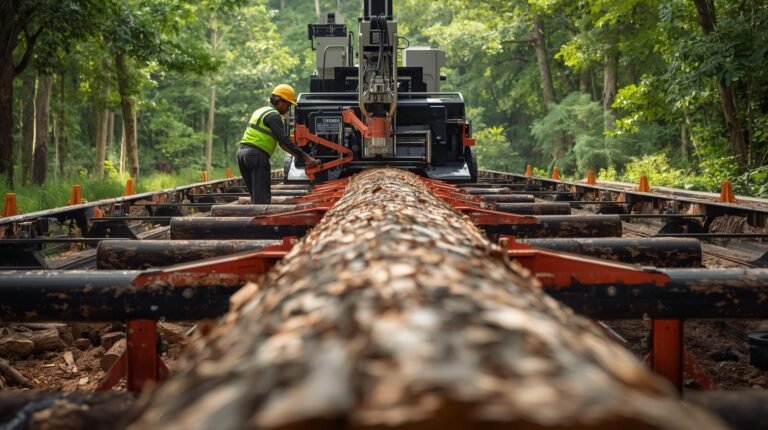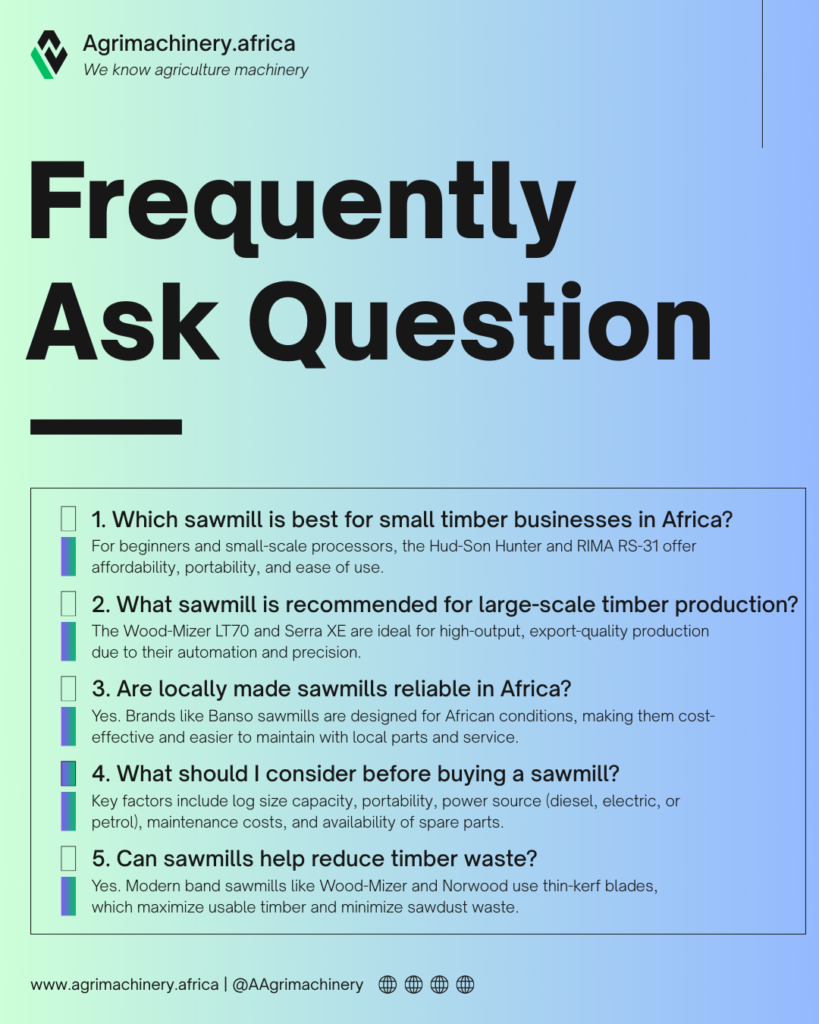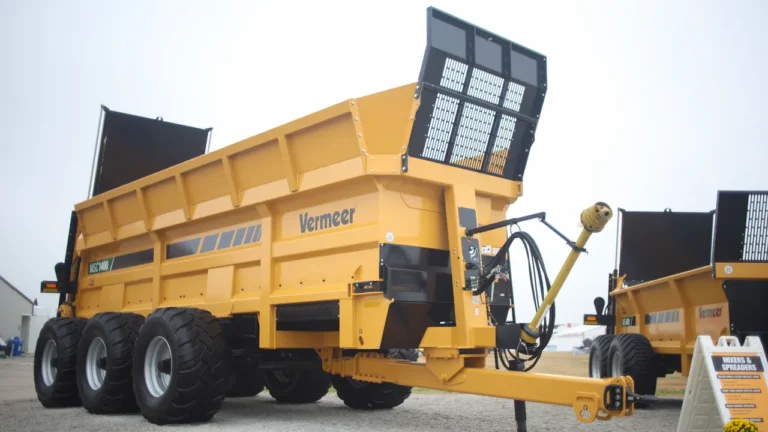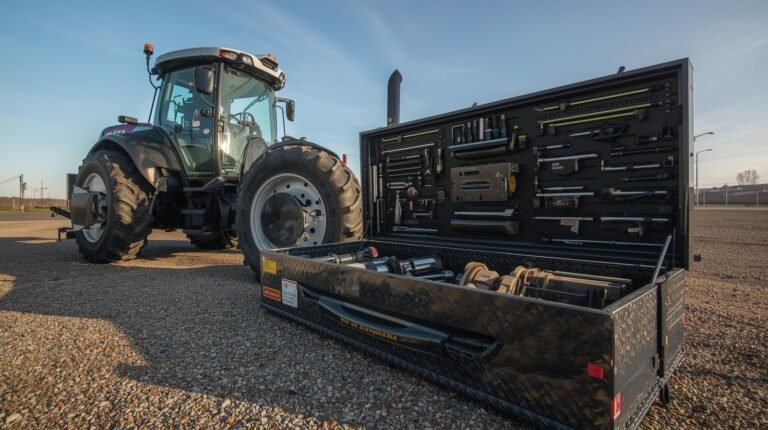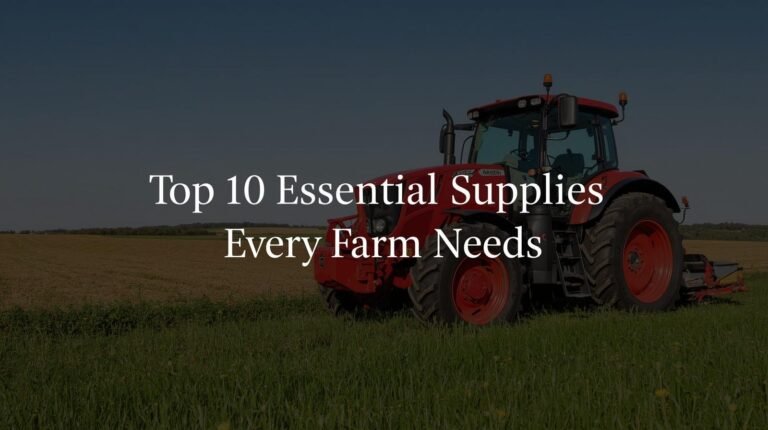A tractor is the heart of any farming operation, a powerful workhorse that tills fields, plants seeds, and hauls heavy loads.
But even the most robust agricultural machinery requires regular care to perform at its best. Unexpected downtime due to a minor mechanical issue can halt productivity, leading to costly delays during critical planting or harvesting seasons.
Keeping a well-stocked inventory of essential tractor supplies is not just a good habit; it’s a fundamental part of efficient farm management.
Having the right tractor spare parts and maintenance items on hand saves you valuable time and money.
Instead of waiting for a delivery or making an emergency trip to the store, you can address common issues quickly and get back to work.
This proactive approach to tractor maintenance ensures your equipment remains reliable, extends its lifespan, and keeps your entire operation running smoothly.
Here are the top 10 essential tractor supplies every farmer should have in their workshop.
1. Engine Oil and Filters
Description: High-quality engine oil and replacement oil filters are non-negotiable for any internal combustion engine.
Oil lubricates moving parts, reduces friction, cools the engine, and cleans away contaminants. The filter traps harmful debris, preventing it from circulating and causing damage.
Importance: Clean oil is the lifeblood of your tractor’s engine. Neglecting regular oil changes can lead to overheating, increased wear and tear, and catastrophic engine failure.
This is one of the most critical aspects of tractor maintenance, directly impacting the machine’s longevity and performance.
Practical Tips: Always use the engine oil grade recommended by your tractor’s manufacturer. Check the owner’s manual for the correct viscosity (e.g., 15W-40) and API service classification.
Buy filters from reputable brands that match your tractor’s specifications. It’s smart to purchase oil in bulk and keep several spare filters on hand to make routine changes convenient.
2. Fuel Filters
Description: Fuel filters are designed to screen out dirt, rust particles, and water from the fuel before it reaches the engine’s sensitive injection system. Most tractors, especially diesel models, have multiple fuel filters.
Importance: Contaminated fuel is a major cause of engine problems. A clogged fuel filter can restrict fuel flow, leading to power loss, rough idling, and difficulty starting.
In modern diesel engines, even microscopic debris can damage high-pressure fuel injectors, resulting in expensive repairs.
Practical Tips: Keep at least two sets of fuel filters for your tractor. This includes the primary filter/water separator and the secondary filter. Inspect the water separator bowl regularly and drain any accumulated water, especially in humid climates.
Change filters according to the service interval in your manual, or sooner if you suspect a bad batch of fuel.
3. Hydraulic Fluid and Filters
Description: Hydraulic fluid is the medium that transfers power in your tractor’s hydraulic systems, which operate everything from the three-point hitch to the power steering and front-end loader. Like other fluids, it requires a filter to keep it clean.
Importance: Clean hydraulic fluid is essential for the smooth and precise operation of your farming equipment attachments. Contaminated fluid can cause sluggish performance, jerky movements, and damage to pumps, valves, and seals. This can compromise both safety and efficiency.
Practical Tips: Use the specific hydraulic transmission fluid recommended for your make and model. Using the wrong type can cause serious damage.
Check fluid levels regularly and keep an eye out for leaks. Having extra fluid and at least one spare hydraulic filter ensures you can top off levels or perform a full service without delay.
4. Grease and a Grease Gun
Description: Grease is a semi-solid lubricant applied to various pivot points, bearings, and joints on a tractor and its implements. A grease gun is the tool used to apply it efficiently into fittings known as zerks.
Importance: Regular greasing is a core task in tractor maintenance. It purges old, contaminated grease and creates a protective barrier against moisture, dirt, and friction.
Proper lubrication prevents premature wear on critical components like kingpins, tie rod ends, and implement pivot points, saving you from costly replacements.
Practical Tips: Invest in a quality grease gun (lever, pistol-grip, or battery-powered) for ease of use.
Use a multi-purpose lithium-based grease suitable for most agricultural machinery applications unless your manual specifies a special type. Before each use, walk around your tractor and lubricate all grease points as recommended by the manufacturer.
5. Air Filters
Description: Tractors operate in dusty, dirty environments. The air filter—often a dual-element system with an outer and inner filter—prevents dust, chaff, and other debris from entering the engine’s intake.
Importance: A clean air filter is vital for engine performance and fuel efficiency. A clogged filter restricts airflow, forcing the engine to work harder and burn more fuel. Over time, it can allow fine dust particles to enter the engine, causing abrasive wear on cylinders and pistons.
Practical Tips: Regularly check your outer air filter and clean it with compressed air (blowing from the inside out) as needed. Never clean the inner safety filter; replace it when it’s dirty. Keep a complete set of new air filters on hand, as they are one of the most frequently changed tractor supplies.
6. A Well-Stocked Toolbox
Description: Beyond fluids and filters, you need a dedicated set of tools for routine adjustments and repairs. This includes a comprehensive socket set (metric and standard), combination wrenches, screwdrivers, pliers, and a sturdy breaker bar.
Importance: Having the right tools makes tractor maintenance faster, safer, and more effective. Fumbling with the wrong tool can damage nuts and bolts or lead to incomplete repairs.
A well-organized toolbox means you can quickly find what you need to tighten a loose bolt, adjust an implement, or replace a part.
Practical Tips: Build your toolkit over time. Start with a quality socket and wrench set that covers the sizes most common on your machine.
Add specialty items like filter wrenches, a torque wrench for proper bolt tightening, and a powerful impact wrench for stubborn fasteners. Keep your tools clean and organized.
7. Spare Belts and Hoses
Description: These are the rubber components that drive accessories like the alternator, water pump, and radiator fan, and carry fluids like coolant. Over time, they can crack, fray, or become brittle.
Importance: A broken fan belt can cause an engine to overheat in minutes, leading to severe damage.
A burst coolant hose can have the same effect. These tractor spare parts often fail without much warning, and having a replacement ready can turn a potential disaster into a minor inconvenience.
Practical Tips: Periodically inspect all belts for signs of cracking or glazing and hoses for bulges, softness, or leaks.
When you buy a new-to-you tractor, it’s a good practice to purchase a full set of replacement belts and hoses. Label them and store them in a dark, cool place to prevent degradation.
8. Linchpins, Clevis Pins, and R-Clips
Description: These small but essential hardware pieces are used to connect implements to the tractor’s drawbar and three-point hitch. Linchpins and clevis pins secure the connection, while R-clips (or hairpin cotters) act as locking fasteners.
Importance: These pins are easily lost in the field, and without them, you can’t safely attach your farming equipment. A missing linchpin can cause an implement to detach while in transit or operation, creating a serious safety hazard.
Practical Tips: Buy these items in bulk. Keep a magnetic tray or a small, dedicated container in your tractor’s toolbox filled with an assortment of common pin sizes. This ensures you always have a replacement when one inevitably gets dropped and lost in the grass or mud.
9. A Battery Charger and Jumper Cables
Description: A smart battery charger helps maintain your tractor’s battery, especially during long periods of inactivity. Heavy-duty jumper cables provide a way to start the tractor if the battery dies unexpectedly.
Importance: Tractor batteries can lose their charge, particularly in cold weather or if the machine sits idle for weeks. A dead battery means a tractor that won’t start, bringing all work to a halt. A charger helps prevent this, while jumper cables offer a solution in an emergency.
Practical Tips: Choose a multi-stage “smart” charger that can charge, maintain, and even recondition your battery. For jumper cables, opt for a heavy-gauge (4-gauge or lower) set with high-quality clamps to handle the demands of a large diesel engine.
10. Coolant/Antifreeze
Description: Coolant, or antifreeze, circulates through the engine and radiator to regulate temperature. It prevents the engine from overheating in the summer and freezing in the winter.
Importance: Maintaining the correct coolant level and concentration is crucial for engine health. Low coolant can lead to overheating, while an improper mix can fail to protect against freezing, potentially causing the engine block to crack—a catastrophic and expensive failure.
Practical Tips: Always use the type of coolant specified in your owner’s manual, as mixing different types can cause gelling and blockages. Keep a pre-mixed 50/50 solution of coolant and distilled water on hand for easy top-offs. Check the coolant level before starting the engine each day.
Stay Prepared, Stay Productive
Your tractor is more than just a piece of agricultural machinery; it’s a critical investment in your farm’s productivity.
By keeping these ten essential tractor supplies readily available, you empower yourself to handle the most common maintenance tasks and minor repairs with confidence.
This proactive mindset minimizes downtime, extends the life of your equipment, and ensures you are always ready for the demands of the season.
Stock your workshop today and invest in the reliability and efficiency of your entire farming operation.
Also Read
Inside the Fendt 1000 Vario Gen4: Power, Precision, and Autonomy
John Deere Combine: Features, Models, and Prices Farmers Should Know in 2025

